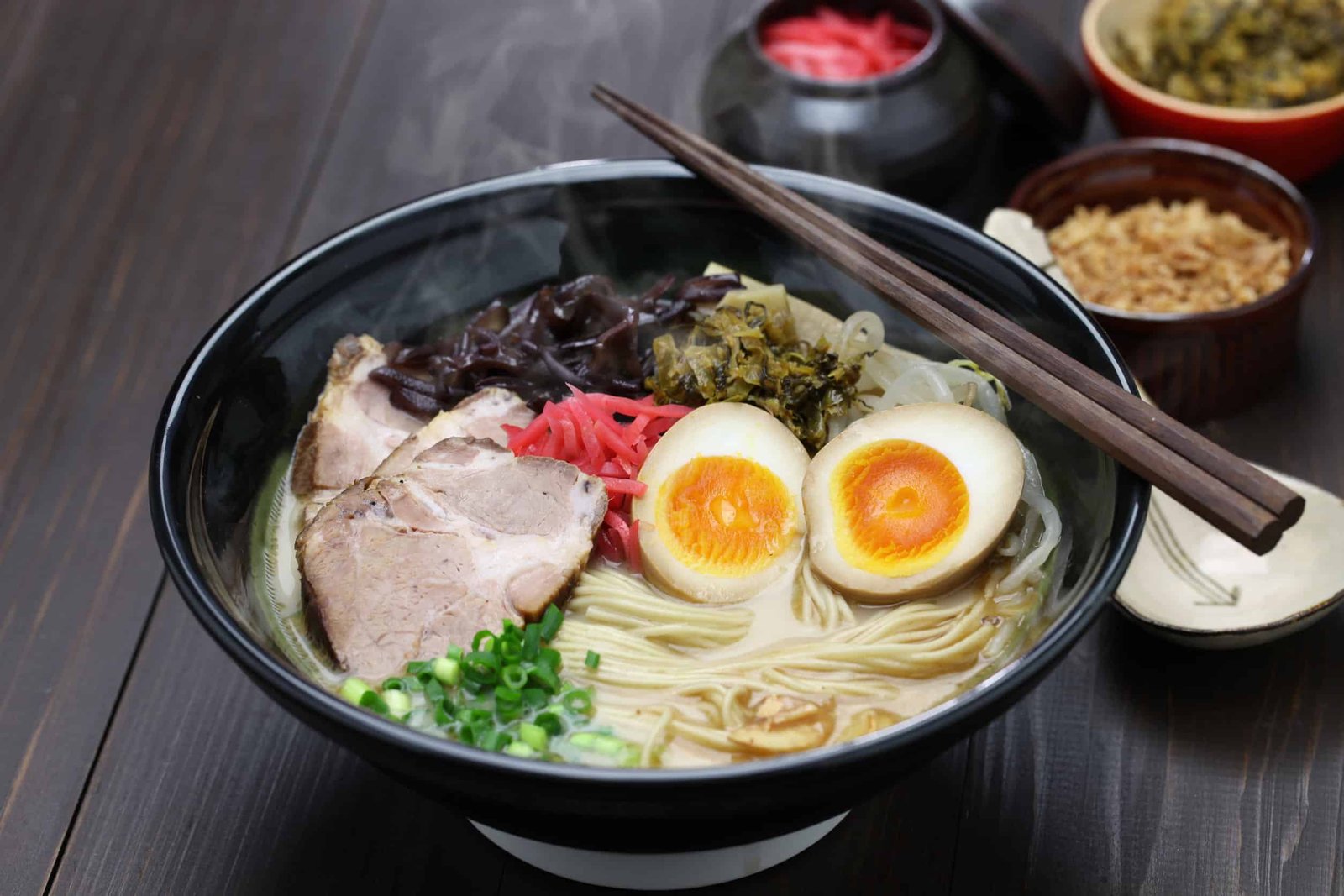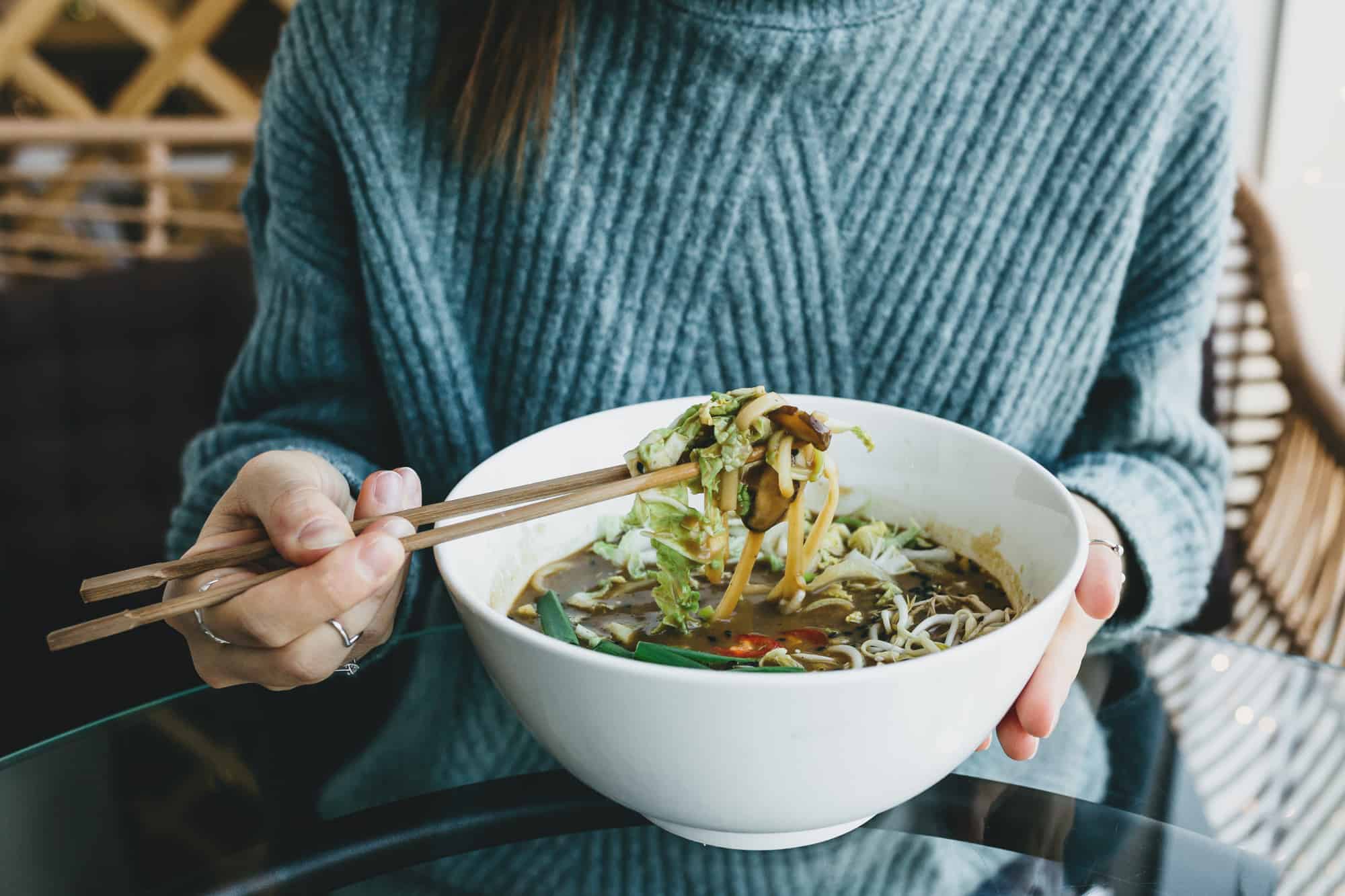Ramen pronounced as “Ra-Men” is a new food on the Pan Asian menu lately trending in India. As this new Japanese food is becoming increasingly popular in India and many countries, restaurants have begun to cater to this delicious Japanese dish. Some home-based caterers and stand-alone eateries in metro cities like Bangalore, Gurgaon, and Mumbai are now preparing only a Ramen-based menu.

If you wonder what Ramen is, it is a Japanese noodle soup with hearty broth alongside toppings such as seaweed, scallions, chashu (braised pork slice), fish cake, etc. In fact, it is quite similar to the Tibetian soup in India known as Thukpa. If you have ever visited the Himalayan destinations in India like Ladakh, Manali, Darjeeling, Sikkim, where there is a mix of Tibetan influence and culture. Thukpa is eaten with much love and appreciation in these places, and it is almost like Ramen. In fact, my newfound love for Ramen originates from the hearty bowls of Thukpa that I have eaten during my trips to Darjeeling, Sikkim, Arunachal Pradesh, and Himachal Pradesh.
Back to Ramen, my first introduction to Ramen was when I visited a Korean restaurant in Thandalam near Sriperumbudur on the Bangalore Chennai highway. This restaurant called the Purple Inn is a secret hideaway gem that caters to the Korean population in the area. With their elaborate menu, I was pretty confused about what to order. That’s when I first ate and discovered Ramen. A large bowl was served with chewy noodles, a clear seafood broth, and toppings. At first, it did not look that appetizing. After eating it, I realized and was reminded of the phrase “not to judge a book by its cover.” The Ramen was packed with flavors, a complete meal in itself. Ever since then, it has become a personal favorite, and I end up making it at home at least once a week. This love for Ramen also made me watch several YouTube videos, Netflix films based on ramen recipes and stories.
Origin of Ramen – Is Ramen Chinese or Japanese?
Although Ramen is now a popular Japanese dish, its origin is from China. A large number of Chinese migrant workers settled in major cities like Yokohama, Kobe, and Nagasaki. Chinese workers started to sell meals from food carts to provide a cheap and quick choice for the not-so-well-to-do working class. They are likely the ones who introduced these instant noodles to Japan. Before this, these noodles were called “Chinese Soba” noodles in Japan up to 1950.
The earliest appearance of Ramen was said to be in Yokohama. Since then, ramen noodle shops sprang like wild mushrooms in both countries. It became increasingly popular with the commuters as well as the tourists. Tokyo holds special popularity with a diverse variety of Ramen. Besides, Tokyo, a neighboring city of Shinjuku, is quite popular for Ramen and a variety of Japanese food.
But then again, is Ramen Japanese or a Chinese invention? Frankly, it isn’t easy to tell. While the Chinese may have introduced the instant noodles to Japan, Japan further worked on the other elements of Ramen to make it their own. A constant search for a dish that’s both economical and fulfilling. Ramen is no longer just confined to Japan or China; it’s become an international dish with followers from multiple countries.
Types of Ramen – Explained!

Before we check the different types of Ramen, let’s see what actually makes a bowl of Ramen. Here are its components:
Noodles – From instant to handmade wheat noodles, these form the base of Ramen. You can also choose how you want the noodles cooked at a few places in Tokyo. The texture can vary from Al Dente (still firm when bitten) to overcooked (soft and mushy).
Tare – Pronounced as “Tah-Reh” refers to dipping sauce in Japanese. But in the ramen world, tare is what gives soul to the Ramen. Tare essentially provides the Ramen with its deep, distinct flavor, saltiness, and seasoning.
Broth – Usually made from using a combination of vegetables, spices, chicken, and pork bones. The broth or the soup is boiled for hours on a slow flame.
Topping – Topping in Ramen usually consists of spring onion or bok choy, eggs fermented in soy sauce (usually with a runny yolk), fish cakes, Chashu (a slice of braised pork), or another selection of meat and Nori (seaweed).
Aroma Oil – This is a flavor bomb. An aromatic oil, usually black garlic oil or different flavored oil, which are sesame-based oil, is used to give a richer flavor to Ramen.
Moving on to the different kinds of Ramen. While the combinations are plenty and infinite, the flavor bases of the broth can be tracked down to these five types:
1. Shoyu – Shoyu is made using a superior quality soy sauce. Basically, a soy-based broth.
2. Shio – This broth is a clear salt broth. Using meat bones and vegetables such as garlic, onion, etc. This broth is cooked on a low flame to ensure that the broth is not cloudy.
3. Miso – Miso is made using fermented grains and soybeans. The broth is full of umami as miso paste is used to flavor the sauce.
4. Tonkotsu – This broth is made using pork bones. The broth is boiled for hours on high flame, making the bones almost soft. The result is a creamy, milk, white broth that is rich and full of flavor.
5. Veg Broth – It is rare to find vegetarian Ramen in Japan. However, many restaurants now serve a version of vegetarian and even vegan options where the broth is made using soy milk, kelp, shitake mushrooms to give it a flavor boost.
Are you wondering how Ramen is eaten? Usually with a pair of chopsticks, which might be slightly difficult in the beginning for someone whoever used them. I felt it was difficult initially to learn how to hold the chopsticks. But with little practice, it was doable. Apart from chopsticks, a spoon is also used to drink up the broth. In Japan, people do not shy away from drinking the broth directly from the bowl.
So next time when you visit a Pan Asian restaurant, look out for Ramen. Check the flavored broth options, choose your toppings. Some restaurants even offer toppings like Gyoza, which is a Japanese-style dumpling. Some offer fried chicken. And the last thing, if you like spicy food, then you might as well ask for a spicy version of Ramen.
I hope this article helps you become a hopeless ramentic.